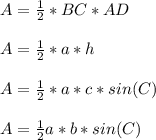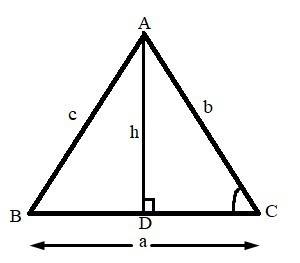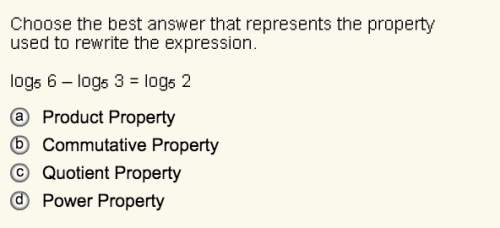
Mathematics, 07.07.2019 07:00 frankierice020
Consider the diagram and the derivation below. given: in △abc, ad ⊥ bc derive a formula for the area of △abc using angle c. it is given that in △abc, ad ⊥ bc. using the definition of sine with angle c in △acd results in sin(c) = . using the multiplication property of equality to isolate h, the equation becomes bsin(c) = h. knowing that the formula for the area of a triangle is a = bh is and using the side lengths as shown in the diagram, which expression represents the area of △abc? bsin(c) absin(c) cbsin(c) hbsin(c) mark this and return

Answers: 1


Another question on Mathematics

Mathematics, 21.06.2019 15:30
Two blends of tea are mixed to make a blend that will be sold at the fair. black tea sells for $2.20 per pound and orange pekoe tea sells for $3.00 per pound. how much of each should be used to obtain a 4lb blend selling for $2.50 per pound?
Answers: 1

Mathematics, 21.06.2019 16:40
How do i get my dad to stop making me gargle his pickle i want my mom to gargle my pickle not my dads
Answers: 3

Mathematics, 21.06.2019 18:30
[10 points, algebra 2-simplifying complex fractions]according to my answer key the restrictions are -1 and 4. but why not positive 1?
Answers: 1

Mathematics, 21.06.2019 18:30
The square pyramid has a volume of 441 cubic inches. what is the value of x? 1/7x is the height x is the base
Answers: 1
You know the right answer?
Consider the diagram and the derivation below. given: in △abc, ad ⊥ bc derive a formula for the are...
Questions

Mathematics, 19.09.2019 01:00




Mathematics, 19.09.2019 01:00

Mathematics, 19.09.2019 01:00

English, 19.09.2019 01:00

English, 19.09.2019 01:00

Mathematics, 19.09.2019 01:00

Biology, 19.09.2019 01:00


Biology, 19.09.2019 01:00


Biology, 19.09.2019 01:00



Mathematics, 19.09.2019 01:00

Mathematics, 19.09.2019 01:00










